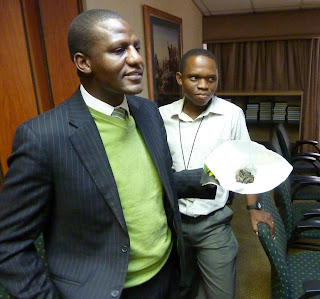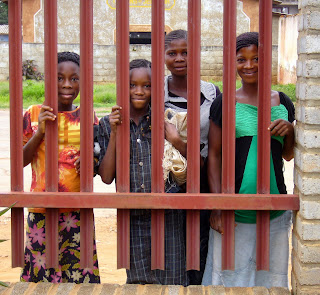
These women are remarkable in their own right, each having found The Church of Jesus Christ of Latter-day Saints through life experiences.

Thembi, at left in second photo, is the 2nd counselor and joined the church two years ago in Cape Town as a university student after seeing the elders on the street. Tilungile, the Relief Society president in the center, is a lawyer and the 9th of 11 children. She joined the church at age 9 in 1987 with her siblings, the first family to join in Swaziland. Nothando, raised in Bulawayo, Zimbabwe, is the 1st counselor and joined the church in 2003 as a single mother of six.
Irene, first photo in gold trim dress in the center, joined the church in Newcastle, South Africa, two years after her husband was baptized in 1996. Alison, next to Irene in center in pink blouse, joined the church in 1970 after encouragement by a friend in her Zimbabwe homeland and has lived in Johannesburg for 17 years. Octavia on the far right in the blue blouse was introduced to the church by a friend in Bulawayo, Zimbabwe, and was baptized in 1998 as a young mother. All but Irene are single women; both Alison and Tilungile have neither married nor given birth to a child.
These women live far from their extended families so consider each other as family. Through the years and presently they rely upon one another for encouragement and support through difficult situations. They are warm, resilient sisters who have extended their friendship to me.




















































